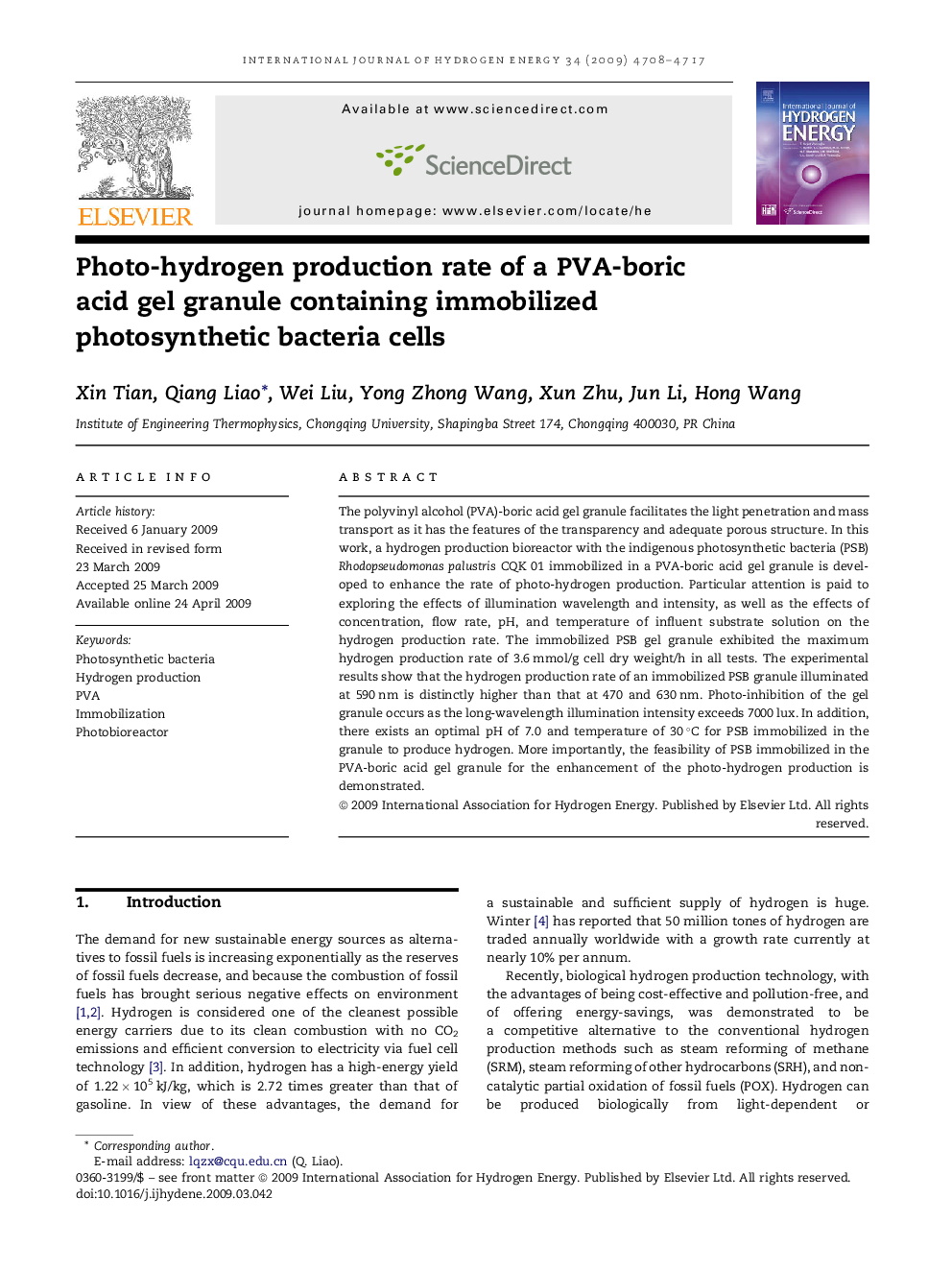| Article ID | Journal | Published Year | Pages | File Type |
|---|---|---|---|---|
| 1277853 | International Journal of Hydrogen Energy | 2009 | 10 Pages |
Abstract
The polyvinyl alcohol (PVA)-boric acid gel granule facilitates the light penetration and mass transport as it has the features of the transparency and adequate porous structure. In this work, a hydrogen production bioreactor with the indigenous photosynthetic bacteria (PSB) Rhodopseudomonas palustris CQK 01 immobilized in a PVA-boric acid gel granule is developed to enhance the rate of photo-hydrogen production. Particular attention is paid to exploring the effects of illumination wavelength and intensity, as well as the effects of concentration, flow rate, pH, and temperature of influent substrate solution on the hydrogen production rate. The immobilized PSB gel granule exhibited the maximum hydrogen production rate of 3.6 mmol/g cell dry weight/h in all tests. The experimental results show that the hydrogen production rate of an immobilized PSB granule illuminated at 590 nm is distinctly higher than that at 470 and 630 nm. Photo-inhibition of the gel granule occurs as the long-wavelength illumination intensity exceeds 7000 lux. In addition, there exists an optimal pH of 7.0 and temperature of 30 °C for PSB immobilized in the granule to produce hydrogen. More importantly, the feasibility of PSB immobilized in the PVA-boric acid gel granule for the enhancement of the photo-hydrogen production is demonstrated.
Related Topics
Physical Sciences and Engineering
Chemistry
Electrochemistry
Authors
Xin Tian, Qiang Liao, Wei Liu, Yong Zhong Wang, Xun Zhu, Jun Li, Hong Wang,
